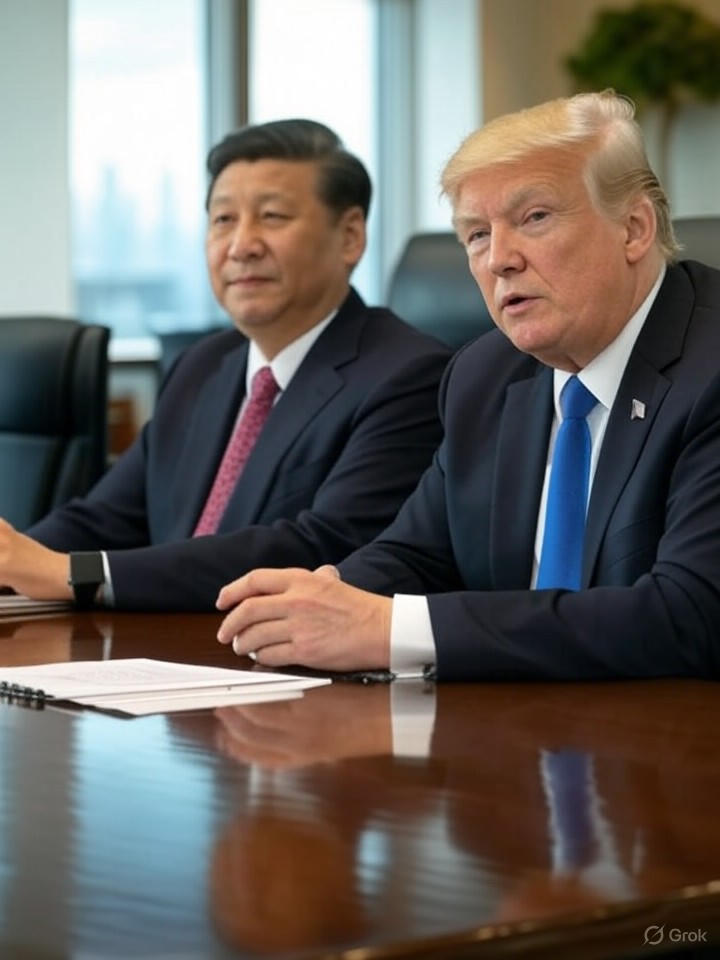The White House confirmed on October 28, 2023, that China has agreed to relax restrictions on rare earth mineral exports as part of a trade deal between U.S. President Donald Trump and Chinese President Xi Jinping. This agreement marks a notable de-escalation in the ongoing tensions between the United States and China, potentially alleviating supply chain challenges for critical technologies reliant on these minerals.
Rare earth minerals play a vital role in various industries, including electric vehicle batteries and defense systems. China currently produces over 80% of the world’s supply, which has given it significant leverage during trade negotiations, particularly in response to U.S. tariffs and export controls on semiconductors.
Details of the Trade Agreement
According to a report from TechCrunch, the trade deal includes China’s commitment to suspend additional export controls on rare earth minerals and halt investigations into U.S. chip companies. This agreement follows months of heightened tensions, including China’s October expansion of restrictions targeting defense and semiconductor sectors, as reported by Reuters.
Industry analysts view this as a strategic retreat by Beijing, influenced by Trump’s threats of imposing 100% tariffs on Chinese imports and implementing export controls on U.S. technology. While the deal does not fully reverse previous restrictions, it grants American firms a crucial one-year reprieve to stabilize their operations without facing immediate disruptions.
Impact on Global Supply Chains
The timing of this rollback is critical for industries that depend on rare earth minerals, such as renewable energy and electronics manufacturing. Bloomberg reported that China will “effectively suspend” these controls, indicating a degree of flexibility but leaving open the possibility of reinstating them should negotiations deteriorate.
U.S. Treasury Secretary nominee Scott Bessent emphasized the urgency of diversifying supply sources. He stated that the U.S. is accelerating efforts to establish alternative supply chains within the next 12 to 24 months. Nevertheless, skepticism remains among industry insiders. Earlier restrictions, which were implemented globally and not solely aimed at the U.S., still partially apply, as noted in a Reuters analysis from late October. Companies must continue to navigate bureaucratic hurdles for licensing, potentially hindering advancements in areas like artificial intelligence hardware and advanced weaponry.
Market responses to the announcement were immediate. Shares of U.S.-listed rare earth miners experienced a decline as concerns over supply shortages diminished, according to another report by Reuters. Investors are now focusing on opportunities within domestic mining, supported by federal incentives under the Trump administration’s push for self-sufficiency. This development serves as a reminder of the risks associated with reliance on Chinese supplies.
Long-Term Considerations
While the agreement provides temporary relief, it does not resolve the underlying geopolitical tensions. Posts on social media platform X (formerly Twitter) reflect a mix of sentiments, with some users recalling China’s historical use of rare earths as a “weapon” in trade disputes. The White House has framed this agreement as a victory for American negotiating power. However, Beijing’s concessions may be a calculated approach to mitigate potential economic repercussions amid its own domestic slowdown.
This situation highlights the ongoing complexities in international trade, particularly in sectors reliant on rare earth minerals. Although the current agreement fosters the possibility of renewed dialogue, experts anticipate continued volatility in the market. Companies are encouraged to diversify their suppliers and use this breathing space to invest in recycling technologies and alternative materials. The intricate relationship between global tech ecosystems and rare earth resources remains a central theme in discussions about future innovation and economic security.







